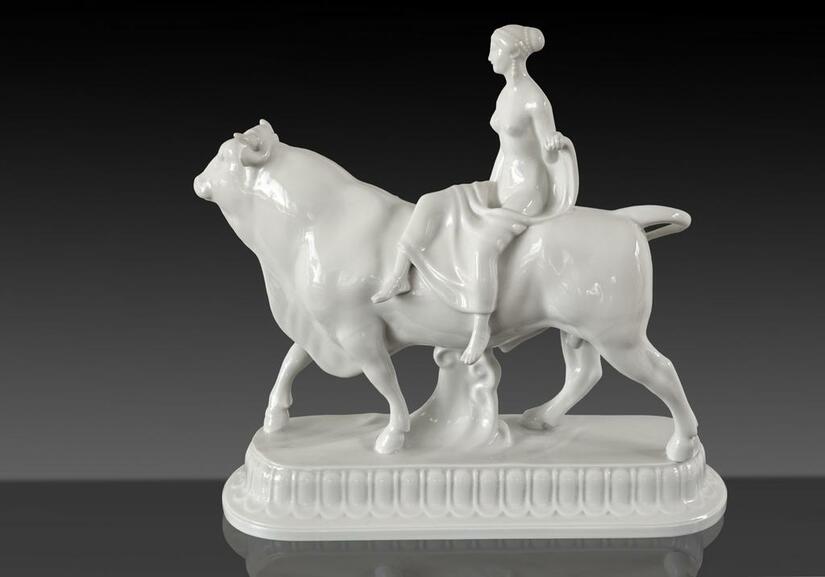Europa auf dem Stier: Königliche Porzellan-Manufaktur (KPM), Berlin (Europa on the Bull: Royal Porcelain Manufactory)

Design Adolph Amberg, first realization in 1909
Porcelain, white, 33 x 34 x 8 cm
The myth that gave our continent its name and is also sometimes used in a simplistic way for the European Union must of course not be missing from the art collection of the Europäische Akademie Otzenhausen - especially since Europe riding the Bull is an important Art Nouveau object with a curious history. The model for this porcelain figure was already created at the beginning of the last century. It was subsequently reproduced several times in different colors.
Adolph Amberg (*1874 in Hanau, †1913 in Berlin, both in Germany) underwent his artistic training in his hometown as well as in Berlin and Paris. The sculptor also designed for the Königliche Porzellan-Manufaktur (Royal Porcelain Manufacture, KPM) in Berlin, which began to produce porcelain sculptures based on this design in 1908. Amberg had already designed the original model of this "Europe riding the Bull" in 1904/05. It was one of the numerous individual pieces of the "Wedding Procession", a porcelain ensemble for the wedding of the Prussian Crown Prince Friedrich-Wilhelm with Cecilie von Mecklenburg-Schwerin.
However, the execution was not successful at first: this piece proved to be too risqué for the client. The Royal Porcelain Manufactory (Königliche Porzellan-Manufaktur) did not purchase the models until 1908 and produced the first series between 1908 and 1910. Their patience was rewarded because people outside of Prussia thought differently: in 1910 Amberg received a gold medal at the Brussels World Exhibition for the spurned work, and even today the wedding procession is considered one of the main works of Art Nouveau.
The Königliche Porzellan-Manufaktur in Berlin was founded by Frederick the Great in 1763 and still produces high-quality porcelain at its founding location in Berlin using traditional methods in (almost exclusively) handmade work to this day. Well-known personalities are among its designers.
From a vase painting from the 5th century BC to - as here - a noble sculpture made of white porcelain with the typical formal language of Art Nouveau, the motif of Europe on the bull was often used in European art. It goes back to Greek mythology, according to which the supreme god Zeus fell in love with the king's daughter Europa. To win her over, he abducted her to Crete in the form of a bull. According to a promise of the goddess Aphrodite, the continent was named after this princess."